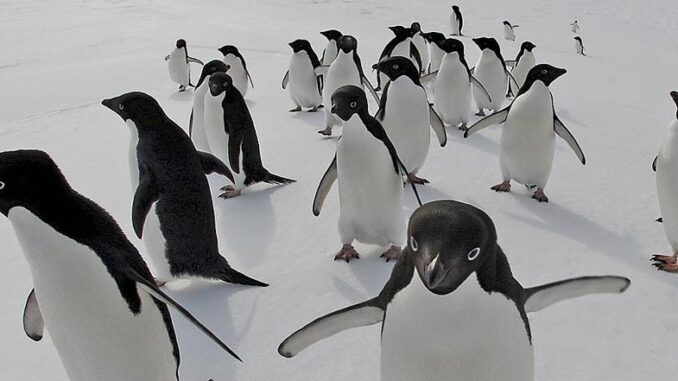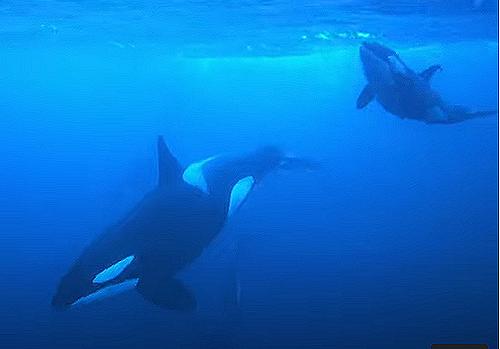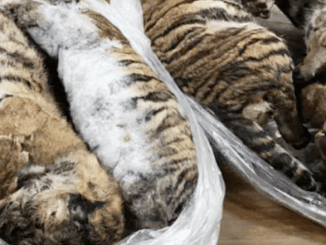
BERKELEY, California, October 26, 2023 (ENS) – Wild animals across every continent are contaminated with flame retardant chemicals, according to a new map tracking peer-reviewed research studies worldwide. The more than 150 species of polluted wildlife mapped include penguins, killer whales, red pandas, chimpanzees and other endangered species.
They are added to furniture, electronics, vehicles, and other everyday products to meet flammability standards, but the flame retardant chemicals often do not work as intended, and they migrate out of products and into wildlife and people, concludes the Green Science Policy Institute, which commissioned the map.
“Flame retardants don’t actually make TV enclosures and car interiors more fire-safe, but they can harm people and animals,” said project lead Lydia Jahl, a scientist at the Green Science Policy Institute in Berkeley. “Though these product flammability standards may seem protective at first glance, many cause widespread and lasting harm for no real benefit.”
Flame retardants found in wildlife include both older phased-out chemicals like polychlorinated biphenyls (PCBs) and polybrominated diphenyl ethers (PBDEs) as well as newer replacements chemicals like chlorinated paraffins and organophosphate flame retardants.
Though known to cause liver, thyroid, and kidney cancers in laboratory animals, chlorinated paraffins are still commonly used in consumer products, with more than one million tons produced annually.
Similarly, use of organophosphate flame retardants is proliferating, although even low levels may harm IQ, attention, and memory in children.
Indicators for the harms of increasing use of chlorinated paraffins in products include black-spotted frogs living near electronic-waste facilities in China. These chemicals are linked to shrinking livers in the frogs and can also be transferred to their eggs.
Flame retardants accumulate up the marine and terrestrial food chains with the highest levels in marine mammals and birds of prey. For example, PCB levels in killer whales, formally called orcas, have been linked to lower calf survival rates and weaker immune systems.

Orca pods in the waters around Greenland, the Strait of Gibraltar, and Hawaii have been ravaged by accumulating flame retardants. Scientists calculate that PCB contamination could wipe out half the world’s orca populations over the next century, despite the fact that PCBs have been banned globally for more than 20 years.
Polychlorinated biphenyls, PCBs, are highly carcinogenic chemical compounds, formerly used in industrial and consumer products. Production was banned in the United States by the Toxic Substances Control Act in 1976 and internationally by the Stockholm Convention on Persistent Organic Pollutants in 2001.
Even so, wildlife and humans are exposed to flame retardants from air, water, and food. This exposure can continue decades after a specific flame retardant is phased out due to its persistent, mobile, bioaccumulative, and toxic properties.
“Killer whales shouldn’t have to swim in a sea of flame retardants. The science is clear that these chemicals harm their development – as well as that of our children,” said Arlene Blum, executive director of the Green Science Policy Institute. “We need to update ineffective flammability standards to stop these toxics from entering the environment, wild animals, and us.”
Flame retardants are also found in species living in areas far from their production, use, and disposal, showing their potential for long-range transport. For example, high levels of flame retardants have been detected in chimpanzees in a protected Ugandan national park.
The map shows only a selection of peer-reviewed studies; many more exist.

Designed and produced by Madeline Dolan, a senior environmental policy student at Villanova University on an internship with the Green Science Policy Institute, the map shows 49 marine animals and birds that are polluted with flame retardant chemicals from pole to pole and in most other areas of the globe.
The polluted seabirds include the Adelie Penguin, Pygoscelis adeliae, of Prydz Bay, East Antarctica as well as four other Antarctic seabird species breeding within Prydz Bay.
The Australian Antarctic Program reports a 43 percent decline in a large Adélie penguin population off the East Antarctic coast, near Mawson research station, over the past decade. The report shows the loss of some 154,000 breeding birds across 52 islands along the 100 km (60 miles) of coastline.
Antarctic Fur Seals, Arctocephalus gazella, in Livingston, Antarctica were also found to carry the polluting flame retardants pentaBDE, octaBDE in a study done from 2000-2014 by American marine scientists.
Other polluted marine mammals mapped include the Atlantic Spotted Dolphin, Stenella frontalis, in Guanabara Bay, Brazil; and the Beluga Whale, Delphinapterus leucas, in the Estuary of St Lawrence, Canada, sampled from 1987-2018. Many beluga whales in the St. Lawrence Estuary have suffered from cancer, likely due to pollutants, including polycyclic aromatic hydrocarbons and flame retardants.
In a 2022 study that Dolan mapped, flame retardants were found in Beluga whales and Blue whales, Balaenoptera musculus, in the waters around Svalbard, Norway. Samples were taken from 2014-2017, and a long list of flame retardants were detected: TCEP, TCIPP, TDCIPP, TEP, TPP, TNBP, TIBP, TBOEP, TEHP, dBPhP, BdPhP, TPhP, TMPP, EHDPP, HBB, PBT, and PBEB.
The list goes on: bottlenose dolphins in Florida and sea lions in California carry flame retardants in their blood as do many terrestrial species.
Land mammals carrying flame retardant chemicals bodies are found worldwide. They include the American Mink, Mustela vison, on the Blackfoot River in the U.S. state of Montana and the Bobcat, Lynx rufus, in Illinois; the Arctic Fox, Vulpes lagopus, in Spitsbergen, Svalbard, Norway; and the Wild Boar, Sus scrofa, in Umbria, Italy.

The mapped study of primates in Uganda’s Kibale National Park found that the feces of four primate species living in the park, including chimpanzees, baboons, red-tailed monkeys and red colobus monkeys, contained significant levels of pesticides and flame retardants.
Female primates and their young in Kibale Park were found to be the most affected, with the researchers linking the pollutants with higher levels of stress and reproductive hormones in these animals. This suggests the compounds might be disrupting how their bodies function and potentially affecting their growth and development, wrote the research scientists from U.S., Chinese and Kenyan universities.
Other polluted land mammals include Norwegian polar bears and reindeer, pikas of the Tibetan Plateau, raccoon dogs of Japan, and caracals of Cape Town, South Africa.
“This map illustrates the global consequences of repeatedly replacing harmful flame retardants with others that turn out to be similarly harmful,” Jahl said. “Instead of this endless cycle of regrettable substitutions, we need to evaluate whether many of the flammability standards that drive the use of flame retardants are even helpful. Some standards – such as California’s old furniture standard – have already been proven ineffective and revised. Many more wouldn’t stand up to scrutiny either, and they are wreaking havoc on wildlife and people alike.”
Featured image: Adelie penguins in East Antarctica. (Photo by Todor Iolovski courtesy Australian Antarctic Program)



